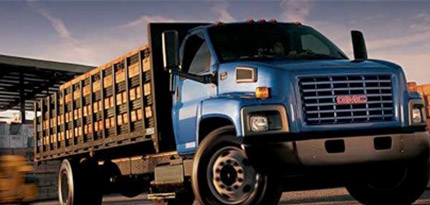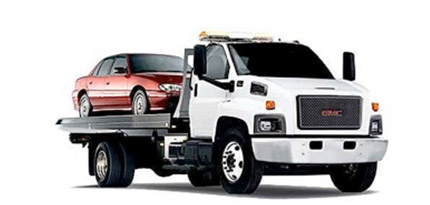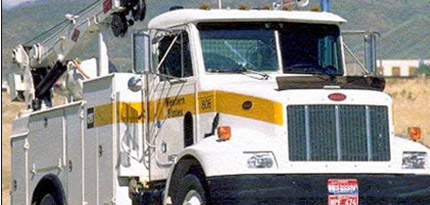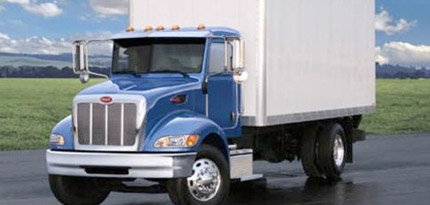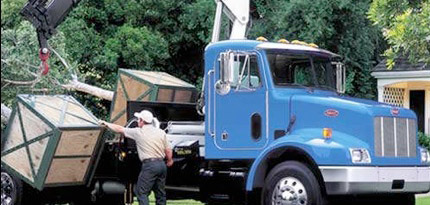GVWR Class 2: 6,001 to 10,000 lb
Common medium-duty pickups and vans in the Class 1-3 group.
| Vehicle |
Manufacturer |
Model |
Weight |
 |
GMC |
Sierra 1500 |
6,100 to 7,400 lb |
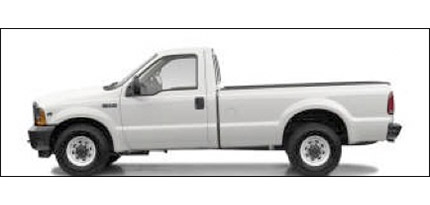 |
Ford |
F-250 |
5,150 lb |
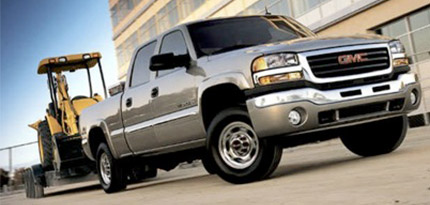 |
GMC |
Sierra 2500 HD Crew Cab |
9,200 lb |
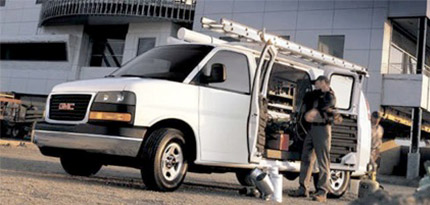 |
GMC |
Savana Cargo Van |
6,200 to 9,600 lb |
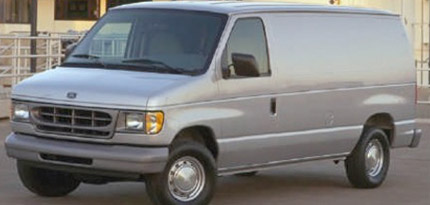 |
Ford |
E-150 Cargo Van |
6,700 to 8,600 lb |
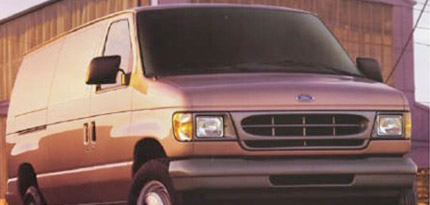 |
Ford |
E-250 Cargo Van |
7,200 to 8,600 lb |
GVWR Class 3: 10,001 to 14,000 lb
Class 3 is the typical “transition zone” between large private vehicles (e.g. heavy duty pickups for towing boats or travel trailers) and pure commercial vehicles. Note that many of these vehicle can have a wide range of GVRs (as also shown in Exhibit 3) deepening on specifications and optional equipment. Class 3 included the smallest tow trucks, flatbeds, and utility bodies that are unambiguously commercial vehicles.
| Vehicle |
Manufacturer |
Model |
Weight |
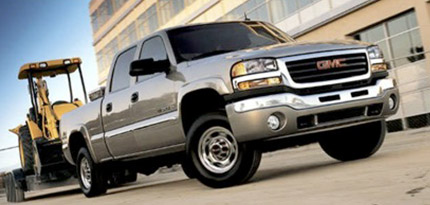 |
GMC |
Sierra 2500 HD |
9,200 to 10,800 lb |
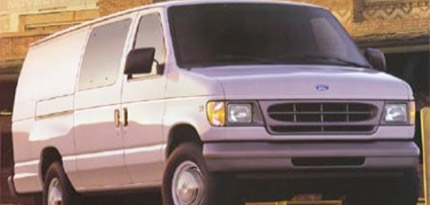 |
Ford |
E-350 Cargo Van |
9,400 to 11,500 lb |
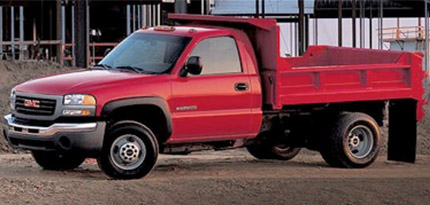 |
Sierra |
3500 Dump Body |
|
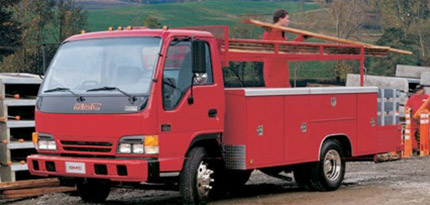 |
GMC |
W3500 Construction |
12,000 lb |
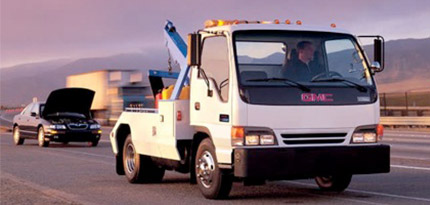 |
GMC |
W3500 Wrecker |
12,000 lb |
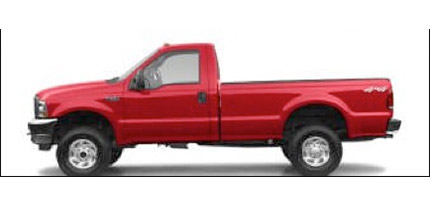 |
Ford |
F-350 |
9,900 to 12,500 lb |
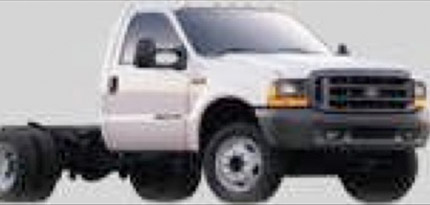 |
Ford |
F-350 Chassis Cab |
9,900 to 12,500 lb |
 |
GMC |
Savana Cutaway |
9,600 to 12,000 lb |
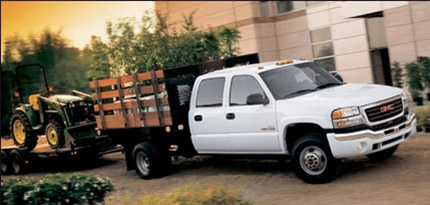 |
GMC |
Sierra 3500 Chassis Cab |
11,400 to 12,000 lb |
GVWR Class 4: 14,001 to 16,000 lb
Using the new 15,000 lb DMV commercial vehicle cutoff (Exhibit 3) would split Class 4, with the smaller and “lighter duty” trucks in with Classes 1-3 and the larger and “heavier duty” trucks in with Classes 5-8. The Ford 450 series and the GMC 4500 series vehicles would ordinarily be over 15,000 GVR.
| Vehicle |
Manufacturer |
Model |
Weight |
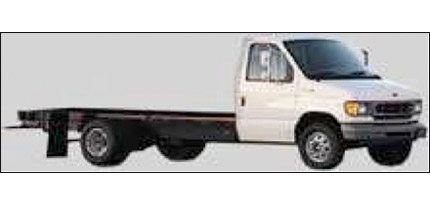 |
Ford |
E-350 Cab Chassis |
14,050 lb |
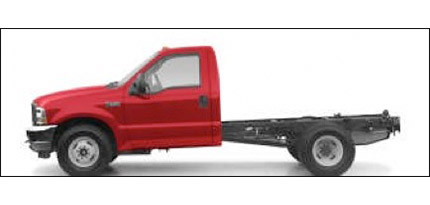 |
Ford |
F-450 Chassis Cab |
15,000+ lb |
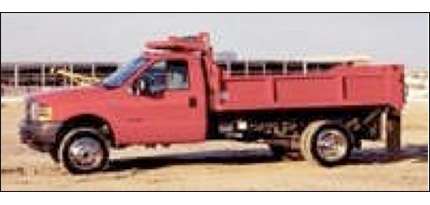 |
Ford |
F-350/450/550 Dump Body |
|
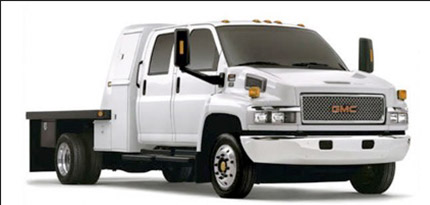 |
GMC |
W4500 Crew Cab |
14,500+ lb |
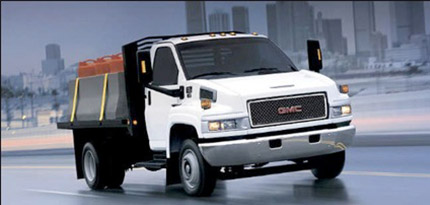 |
GMC |
W4500 Flat Bed |
14,500+ lb |
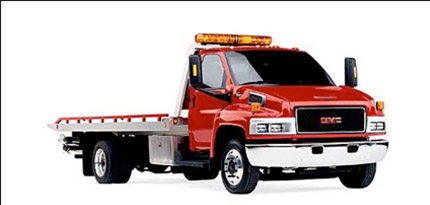 |
GMC |
W4500 Rolloff |
14,500+ lb |
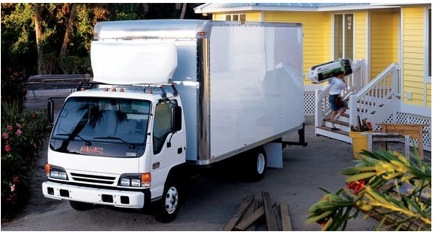 |
GMC |
W4500 Van |
14,500+ lb |
Commercial automobiles are classified by the United States Department of Transportation. They are classified according to the Gross Vehicle Weight Rating (GVWR) as specified by the manufacturer.
- Class 1: Weight range from 0-6,000 pounds (0-2,722 Kg).
- Class 2: Weight range from 6,001-10,000 pounds (2,722-4,536 Kg).
- Class 3: Weight range from 10,001-14,000 pounds (4,536-6,350 Kg).
- Class 4: Weight range from 14,001-16,000 pounds (6,351-7,257 Kg).
- Class 5: Weight range from 16,001-19,500 pounds (7,258-8,845 Kg).
- Class 6: Weight range from 19,501-26,000 pounds (8,846-11,793 Kg).
- Class 7: Weight range from 26,001-33,000 pounds (11,794-14,969 Kg).
- Class 8: Weight range anything above 33,000 pounds (14,969 Kg).
Categories on the other hand, are not as well defined and may vary amongst different truck industries. In the table to the right, the most commonly used categories are included as reported from the US DOT Vehicle Inventory and Use Survey (VIUS).
Class One
A class one vehicles is a vehicle that has a gross vehicle weight rating (GVWR) ranging from 0-6,000 pounds (0-2,722 kg). Examples of vehicles within this class are listed below:
- Mini Van: A mini-van is a type of van designed for personal or commercial use. Mini vans are typically either a two or one-box design for maximum interior volume. Mini vans are designed to be taller than a sedan, hatchback, or a station wagon.
- Small Utility Truck: A utility truck is a truck with compartment storage, and can have several variations. Often, a utility truck or service truck is commonly used for landscaping and mechanics purposes. These trucks can also have variations such as a crane, digger, or cable reel.
- Light Pick-Up Truck: A pick-up truck, which is often referred to as a “pick-up”, is a light motor vehicle with an open-top, rear cargo area (also known as a bed). Examples of a light pick-up truck are a Ford F-150, GMC Safari, and a GMC Sonamer.
- Hearses: A hearse is a vehicle used during funerals which are used to transport a coffin from a church to a funeral home and then to its final destination at a cemetery.
- Limousines: A limousine is a luxury vehicle or “saloon car”, especially one with features which include a lengthened wheelbase and driven by a chauffeur. They are also called “stretch” limousines which are traditionally black or white. While some limousines may be owned privately by individuals, most of them are owned by businesses which transport guests to special events.
Class Two
A class two vehicle is a vehicle that has a gross vehicle rating (GVWR) ranging from 6,001-10,000 pounds (2,722 to 4,536 kg). Class two vehicles can be subdivided into class 2a and class 2b, with class 2a being 6,001 to 8,500 pounds (2,722 to 3,856 kg), and class 2b being 8,501 to 10,000 pounds (3,856 to 4536 kg). Class 2a can also be referred to as a light-duty truck, with class 2b being the lowest heavy-duty class, also being called the “light heavy-duty” class. Examples of vehicles within this class are listed below:
- Large Mini Van: A mini-van is a type of van designed for personal or commercial use. Mini vans are typically either a two or one-box design for maximum interior volume. Mini vans are designed to be taller than a sedan, hatchback, or a station wagon. Class two mini-vans are bigger in weight with a larger size for more cargo room, seating, and doors.
- Large Cargo Van: A utility van, or most commonly known as a cargo van or a box-shaped trailer, is a large-boxy vehicle used to carry goods. This vehicle is also referred to as a full-size van which has counterparts similar to a light truck. Cargo vans are used to transport dry goods or if it has a refrigerator system, cold goods.
- Heavy Pick-Up Truck: A pick-up truck, which is often referred to as a “pick-up”, is a light motor vehicle with an open-top, rear cargo area (also known as a bed). A class two pick-up truck is one that is bigger in size with a larger rear cargo area. Examples of a class two pick-up truck are a GMC Sierra 1500 and a Ford F-250.
- Ambulances: An ambulance is a vehicle for transportation of injured or sick people to, from or between places of treatment for an illness of injury. A typical ambulance is based on either the framework of a van or pick-up truck. The framework of the vehicle is then modified to the designs and specifications of the purchaser.
Class Three:
A class three vehicle is a vehicle that has a gross vehicle weight rating (GVWR) ranging from 10,001 to 14,000 pounds (4,536 to 6,350 kg). Examples of vehicles within this class are listed below:
- Light Conventional Vans: A conventional van is a smaller boxlike vehicle that resembles a panel truck, which often has double doors both at the rear and along the curb side and that can be used as a truck. The conventional van is usually fitted with rows of seats, or equipped with living quarters for traveling and camping.
- Light Walk-In Delivery Trucks: Walk-In trucks (also known as Multi-stop trucks or step trucks) are vehicles combined with a light duty and medium duty truck which was created for local deliveries to residences and businesses.
- Light City Delivery Trucks: A delivery truck, also known as a box truck, is a truck with a cab that is totally separated from the cargo area. The cargo area sits on a frame and usually has a roll-up rear door that’s similar to a garage door. Delivery trucks are generally used by rental companies such as U-Haul and Ryder and are used to haul large items such as appliances and large boxes.
Class Four
A class four vehicle is a vehicle that has a gross vehicle weight rating (GVWR) ranging from 14,001 to 16,000 pounds (6,351 to 7,257 kg). Examples of vehicles within this class are listed below:
- Medium Conventional Vans: A conventional van is a smaller boxlike vehicle that resembles a panel truck, which often has double doors both at the rear and along the curb side and that can be used as a truck. The conventional van is usually fitted with rows of seats, or equipped with living quarters for traveling and camping. Compared to the lighter walk-in conventional van in class three, a class four conventional van may be larger in size, or may be equipped with more cargo to add to the total gross vehicle weight rating.
- Medium City Delivery Trucks: A delivery truck, also known as a box truck, is a truck with a cab that is totally separated from the cargo area. The cargo area sits on a frame and usually has a roll-up rear door that’s similar to a garage door. Delivery trucks are generally used by rental companies such as U-Haul and Ryder and are used to haul large items such as appliances and large boxes. Compared to the lighter city delivery truck in class three, a class four city delivery truck may be larger in size with a longer cargo area to add to the total gross vehicle weight rating.
- Medium Walk-In Trucks: Walk-In trucks (also known as Multi-stop trucks or step trucks) are vehicles combined with a light duty and medium duty truck which was created for local deliveries to residences and businesses. Compared to the lighter walk-in truck in class three, a class four city delivery truck may be larger in size with a longer cargo area to add to the total gross vehicle weight rating.
Class Five
A class five vehicle is a vehicle that has a gross vehicle rating (GVWR) ranging from 16,001 to 19,500 pounds (7,258 to 8,845 kg). Examples of vehicles within this class are listed below:
- Bucket Trucks: A bucket truck is a vehicle which has a platform which consists of an aerial device mounted to a truck (a motor vehicle designed to transport cargo). In some cases, the aerial device is mounted onto a van, and is then referred to as a bucket van. The aerial device is designed to safely lift personnel into the air to perform work. The aerial device is also used to lift materials and supplies.
- Heavy City Delivery Trucks: A delivery truck, also known as a box truck, is a truck with a cab that is totally separated from the cargo area. The cargo area sits on a frame and usually has a roll-up rear door that’s similar to a garage door. Delivery trucks are generally used by rental companies such as U-Haul and Ryder and are used to haul large items such as appliances and large boxes. Compared to the medium-sized city delivery truck in class four, a class five city delivery is even larger in size with a longer cargo area to add to the total gross vehicle weight rating.
- Large Walk-In Trucks: Walk-In trucks (also known as Multi-stop trucks or step trucks) are vehicles combined with a light duty and medium duty truck which was created for local deliveries to residences and businesses. Compared to the medium walk-in truck in class four, a class five city delivery truck is even larger in size with a longer cargo area to add to the total gross vehicle weight rating.
Class Six
A class six vehicle is a vehicle that has a gross vehicle rating (GVWR) ranging from 19,501 to 26,000 pounds (8,846 to 11,793 kg). Examples of vehicles within this class are listed below:
- Beverage Trucks: A beverage truck is a vehicle that has a delivery truck (box truck) structure which is primarily used to transport beverages. A beverage truck has a large cargo area that sits on a frame and usually has a roll-up rear door that’s similar to a garage door. Compared to a standard delivery truck (box truck), a beverage truck has a built in cooling system designed to be set at different temperatures. Cooling devices include anything from an AC unit, ice, or dry ice to maintain cool temperatures inside of the truck.
- School Buses: A school bus is a type of vehicle designed and manufactured for student transport to and from school and school related events. A school bus can be up to 45 feet (14 meters) long and carry up to 44 to 48 students with 23 to 25 seats. Federal safety standards require school buses to be painted school bus yellow and equipped with specific warning and safety devices.
- Stake Body Trucks (Rack Trucks): A stake body truck is an open truck with the cargo area being a platform with sockets at the edge into which upright stakes may be placed to form a fence around.
Class Seven
A class seven vehicle is a vehicle that has a gross vehicle weight rate ranging (GVWR) ranging from 26,001 to 33,000 pounds (11,794 to 14,969 kg). Examples of vehicles within this class are listed below:
- Tow Trucks: As the name implies, a tow truck is a vehicle that has a bed without a top or sides. The flatbed allows the carrying of equipment or cargo such as a small vehicle. The flatbed allows the carrying of vehicles or cargo that won’t interfere with the elements, which can easily be loaded and unloaded. Other equipment (besides a vehicle), such as construction material should not be vulnerable to precipitation and should require more space than is available on a closed body.
- Furniture Trucks: A furniture truck, or a moving truck, is a very large delivery truck designed to transport large pieces of furniture and household items when moving from one house to another. Like a box truck, a furniture truck has a cab that is separated from the cargo area. The cargo area sits on a frame and usually has a roll-up rear door that’s similar to a garage door. Furniture trucks are generally used by rental companies such as U-Haul and Ryder.
- Garbage Trucks: A garbage truck is a truck specifically designed to collect small quantities of waste and haul the collected waste to a solid waste treatment facility. Other common names for the garbage truck can be a “trash” truck or “dump” truck. There are five basic models of garbage trucks. They include front loaders, rear loaders, side loaders, pneumatic collection, and grapple trucks. The difference between these garbage trucks depends on which side and how the waste is loaded onto the vehicle.
- City Transit Bus: A city transit bus (also called a commuter or public bus) is a bus used for short distance public transport purposes. The features of a transit bus are geared for operation on regular urban and suburban bus routes, with multiple defined stops, in a commuting or short distance leisure role. Transit buses are typically 40 feet long with a seating capacity ranging from 39-52 passengers equipped with wheelchair lifts. Transit buses are owned and operated by publicly run transit authorities or municipal bus companies, as well as private transport companies.
Commercial Auto Florida
Commercial Auto Florida, LLC.
1540 International Parkway,
Suite 2000
Lake Mary, FL. 32746 Get Directions
Class Eight
A class eight vehicles is a vehicle that has a gross vehicle weight rating (GVWR) ranging from 33,000 pounds or above (14,969 plus kg). Examples of vehicles within this class are listed below:
Fire Trucks: A fire truck (also called a fire engine, fire apparatus, or fire appliance) is a vehicle designed to assist in firefighting by transporting firefighters to and from the scene of a fire. Typically, a fire truck is approximately 24-28 feet long with a height of 12 feet. A fire truck is equipped with fire fighting equipment such as ladders, pike poles, axes, halligan bars, fire extinguishers, ventilating equipment, floodlights, hose lamps, breathing apparatus, and other general tools. The fire truck is able to put out fires by several methods either by passing water through hoses obtained by a fire hydrant or an on board water reservoir.
Large Tour Buses: A tour bus is a road vehicle designed to carry passengers. Dimensions of a typical tour bus are around 35 feet in length, 8 feet wide, and around 12 feet in height. The most common type of bus is the single decker rigid bus, with larger loads carried by double-decker buses. Tour buses may be used for tourism, private hire (musicians and other artists), school transport, political campaigns, and an array of other purposes.
Heavy Semi-Tractor Trailers(COE Sleeper & Heavy Conventional): A semi-truck, most commonly known as a “tractor trailer”, “semi”, or “big rig”, have two or three axles, and are used to haul heavy-duty commercial construction machinery. The most common layout of a semi-truck has the engine in front of the cab, one steeling axle, and two drive axles with a strong internal beam connecting them to a cab. A large proportion of its weight is supported either by a road tractor or by a detachable front-axle assembly called a dolly. When coupled together, the cab and tractor combination is often referred to as a semi. When the cab is removed, the semi-truck is equipped with legs that can be lowered to support it when it is unhooked from the tractor. Trailers vary in size, but the most common sizes today are 48 to 53 feet in length.
Dump Trucks: A dump truck is a truck used to transport loose material (such as sand, dirt, gravel, or stones) for construction purposes. A typical dump truck is equipped with a hydraulic operated open-box bed at the rear end of the truck. This allows the contents in the bucket-like structure to be lifted and deposited in a desired area on the construction site. A standard dump truck has one front axle, and one or more rear axles which typically have dual wheels on each side. Typically, the body of a standard dump truck is around 35 feet in length.
Cement Trucks: A cement truck, also called a concrete mixer is a truck that is used to transport and mix concrete up to the construction site. A typical concrete mixer attached to the concrete truck is a revolving drum to mix the components occurring during transport to the construction site. The cement truck maintains the materials liquid state through agitation or turning of the drum, until delivery at its final destination. A cement truck is equipped with a gravity fed chute on the back center of the truck. Approximately 20 feet long, the chute feeds the concrete mixture onto a specific area on the construction site. Concrete mixers are equipped with anywhere from two axles and up. A cement truck is on average 32 feet long, 10 feet wide, and has a height around 12.5 feet. Cement trucks typically weigh over 30,000 pounds (13,600 + kg) and can carry roughly 40,000 pounds (18,100 kg) of concrete although many varying sizes of concrete trucks are currently in use.
